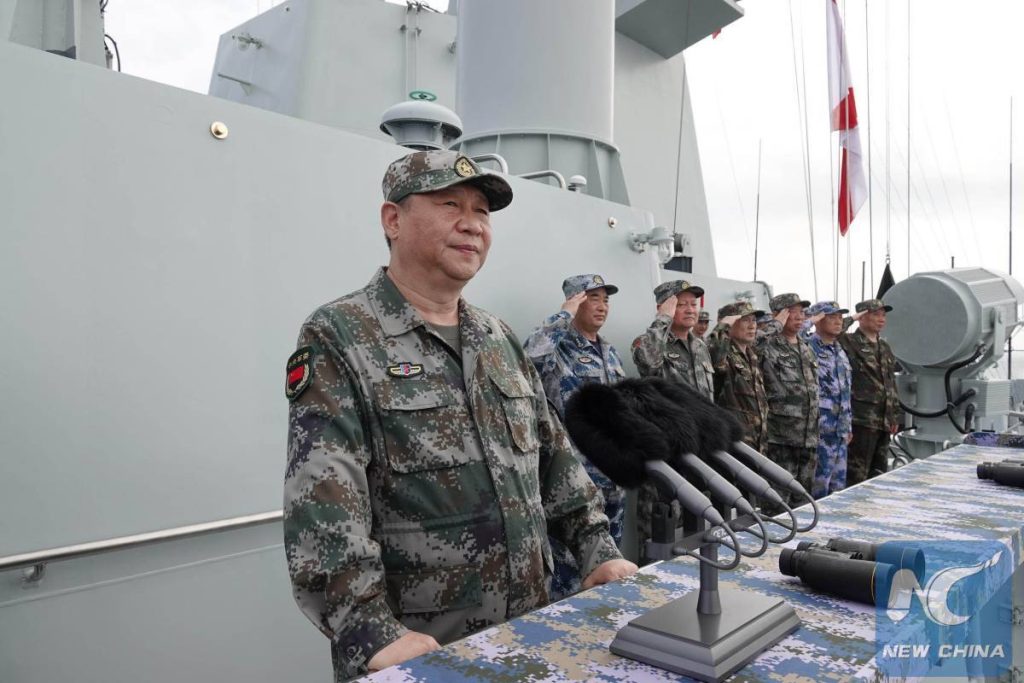
Goldman Sachs analysts said the distress in China’s property market could trigger 1.9 trillion yuan of credit losses, based on a 10% loss rate derived from recent cracks in the bond market. Banks could shoulder 1.2 trillion yuan ($153 billion) or 61% of the losses, Goldman Sachs analysts said
As the property market crisis worsens in China, it is the country’s major banks that are witnessing growing numbers of non-performing loans, giving the crumbling economic pyramid of the world’s second most powerful country a further jolt amid the ongoing trade war with the US.
China’s major banks—Bank of Communications, China Merchants Bank, China Construction Bank and Bank of East Asia—have reported a huge jump in their non-performing loans on their books in the first half of the current year.
According to South China Morning Post, Bank of Communications which is China’s sixth largest bank, on August 25 reported its non-performing loans increased by 6.44 billion yuan ($821 million) to 104.96 billion yuan in the first half of 2023, compared with the end of 2022. The bank’s bad loan rate for loans exposed to the real estate sector rose by 0.59% to 3.39% in the corresponding period.

Similarly, China Merchants Bank’s non-performing loans, in comparison to the end of 2022, increased by 2.64 billion yuan to 60.64 billion yuan in the first of 2023. Earlier on August 23, China Construction Bank reported that its bad-loan exposure to the real estate sector jumped 18% over the first six months of 2023 to 39.6 billion yuan in comparison to the end of December.
As per the Hong Kong-based daily newspaper, Bank of East Asia, Hong Kong’s largest family-owned bank on August 24 also reported its non-performing loan ratio rising by 0.4 % to 3.15% in the first half of this year.
The slump in China’s property market is the key reason behind the rise in non-performing loans of banks in the country. The real estate sector, which once accounted for roughly 20% of China’s GDP, is facing its worst moment.
According to Goldman Sach Group Inc. estimates China’s banking system’s exposure to the real estate sector is about 58 trillion yuan. However, the US investment banker said the real estate developers owed 19.3 trillion yuan ($2.65 trillion) in debt to banks at the end of June last year.
More than 50 Chinese developers, as per the credit ratings agency Standard &Poor, have defaulted or failed to make debt payments in the last three years. Earlier this month, China’s Country Garden Holdings Co, which was once the country’s biggest real estate developer with more than 3,000 projects nationwide, missed two coupon payments to the banks. It is on the verge of default, Bloomberg said.
On August 11, Country Garden Holdings Co. issued a statement maintaining that it expected a net loss of as much as $7.03 billion for the first half of 2023. Evergrande Group, China’s second-largest property developer in terms of sales, filed for bankruptcy protection in the US last week. In 2021, it had defaulted on $300 billion debt.

Goldman Sachs analysts said the distress in China’s property market could trigger 1.9 trillion yuan of credit losses, based on a 10% loss rate derived from recent cracks in the bond market. Banks could shoulder 1.2 trillion yuan ($153 billion) or 61% of the losses, Goldman Sachs analysts said.
The New York Times said real estate troubles in China are also taking China’s shadow banking system of financial trust companies in its octopus’ grip. These institutions, as per the US daily, offer investments with higher returns than standard bank deposits.
State-backed Zhongrong International Trust, one of China’s largest shadow banks, missed payments on more than 30 wealth management products–all this amidst reports of liquidity problems being faced by its controlling shareholder Zhongzhi Enterprise Group, a huge financial conglomerate, South China Morning Post said.
As per Zhongrong International Trust’s annual report, of its 629 billion yuan ($86.2 billion) of its total assets in 2022, as many as 11% were invested in real estate. Based in Harbin, the capital of China’s northernmost province of Heilongjiang, the state[1]backed shadow bank was also a major shareholder in several property projects of defaulted developers, such as Shimao Group Holdings and Sunac China Holdings.
Reuters said exposure of China’s $3 trillion shadow banking sector, which is roughly the size of Britain’s economy, to property developers, has grown over the past year. In view of this, New York-based CreditSight, a credit research company has warned that further defaults in China’s shadow banking sector could hurt investor and market sentiment with its impact on the country’s financial stability.


